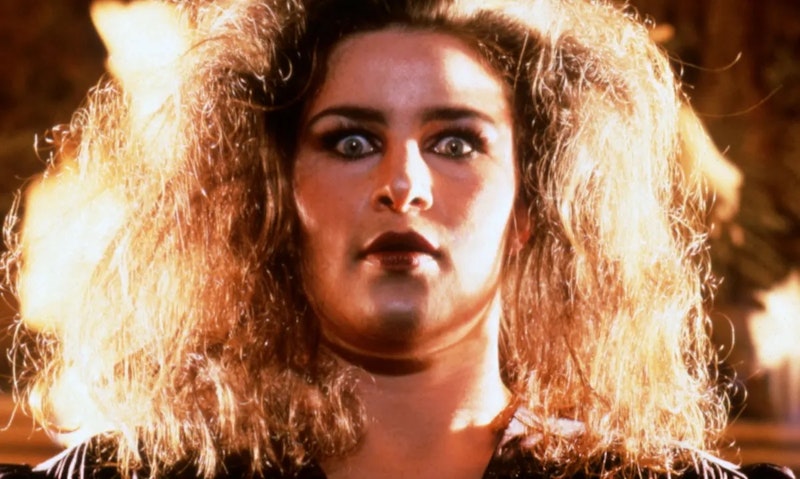In Bulworth (1998), Warren Beatty plays a leftist Senator in meltdown who despite being an old(er) white man adopts a rap persona to express his politics: “White people, black people, brown people, yellow people, get rid of 'em all/All we need is a voluntary, free spirited, open-ended program of procreative racial deconstruction/Everybody just gotta keep fuckin' everybody til they're all the same color.”
In Death of a She Devil, the late Fay Weldon’s 2017 sequel to her The Lives and Loves of a She Devil (1983), She Devil Ruth Patchett, now octogenarian Lady Ruth Patchett, looks over what she’s achieved from atop her former romantic rival’s lighthouse home, now housing Patchett’s Institute for Gender Parity. “…She had madly believed that the man-woman, the woman-man could become the norm and that would be the end of the gender wars, and with that so many ills… And she was the one who had let him in, let him share her crown, given him dominion over all her lands. She realised, and it was a horrid realisation, that in the war between the sexes the gender war, men had just won a decisive victory. Finding themselves despised and derided, they had won back control.” Patchett sees that her life’s campaign has been turned from helping working-class, unattractive, or otherwise disadvantaged women to instead erasing any distinctions, not of race or color, but between male and female.
The dynamics of the original She Devil revolved around a romantic triangle of Ruth, her husband Bobbo, an accountant for celebrity authors, and his client, romance novelist Mary Fisher. In the sequel there’s also a romantic triangle, between a somewhat sexually opportunistic lesbian, Valerie Valeria, a staffer at the Institute for Gender Parity, Leda, a “diesel dyke” security guard at the Institute, and Ruth’s grandson Tyler Patchett. Valerie, a tall, blonde and beautiful Australian, convinces Tyler, a tall, blond and beautiful, but directionless young British man, to change sexes and become Tayla Patchett, seducing him into transitioning with sex, which Valerie gives him before the transition and promises more of, along with a wedding, after he’s gelded. Does she love him or is she just using Tyler/Tayla to climb the career ladder and solidify her power?
It’s interesting because Weldon—the author of 31 novels and more than 20 plays, all of which had a radical feminist bent at least up through the late-1990s (she joined the Church of England in 2000)—seems to be at least partially recanting, depicting British feminism as decayed, eaten by the maggotry of proselytizing gender ideologues. embezzling non-profiteers, and consultant class incompetence.
Why I am writing about a six-year-old novel?
The film version of the first She Devil starred Roseanne Barr as Ruth Patchett, and Ruth is the only major character from the first book still alive in the second. Meryl Streep played Mary Fisher and Ed Begley Jr, played Bobbo. Perhaps a sequel movie critical of the feminist movement wouldn’t be to Streep’s or Begley’s taste, but that doesn’t matter because in Death of a She Devil they only appear as minor characters, ghosts or bedridden elders. Barr, I suspect, might be willing to reprise her role.
Conservatives and feminism critics keep decrying the lack of cultural output on their side. In the premier episode of Pod of the Valkyries, conservative podcasters Inez Stepman, Peachy Keenan and Aimee Terese lament the popularity of Barbie. Keenan, once a writer for Disney, has a screenplay you can buy on Amazon. And the conservatives at the Daily Wire have started producing movies now streaming, like their comedy Lady Ballers released late last year.
I don’t know a lot about how the entertainment industry economy works, but She Devil only earned $16 million, less than the somewhat similarly-themed, but more musical and star-studded movies The First Wives Club or Nine to Five, which both had over $100 million in box office. So the rights might not be that expensive.

